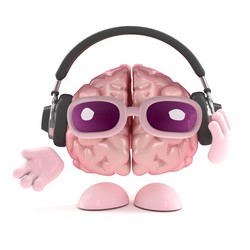Prosody strategies to improve attention and memory of audio messages
How something is said can be as important as what is said. The knowledge about how the prosody features influence the listener’s attention and recall is fundamental for improving the cognitive processing as well as obtaining a more complete picture of how brain processes auditory stimulus. The EU-funded PROSOCOGNITION(opens in new window) (Prosodic strategies to improve the attention and recall of a listener exposed to an auditory stimulus) project examined how different pitch range variations, stress changes, and different speech rates applied to radio commercials may influence the attention and recall of the listener. Project partners conducted three experiments involving 16 informative and narrative radio commercials, which combined pitch variations, different quantity of highlighted words and different speech rates. They measured listeners' conscious processing and stimulus response. Heart rate, skin conductance, facial muscle activation and eye tracking were all employed to capture attention and emotional responses. In addition, perception scales and memory tests helped to observe content short-term memory representations. Overall, findings show that the degree of acoustic contrast introduced by pitch variations from high to low pitch, a moderate quantity of highlighted words (5 to 10 words in each commercial) and a speech rate of 180 words per minute improved the listener's attention and recall when exposed to an auditory message. By gaining better insight into how the brain processes prosody in an auditory stimulus, PROSOCOGNITION makes progress in the study of public speaking with important implications for speech professionals. Project results should also assist in improving the processing of auditory messages in media and political communication, marketing, advertising, education and health.



